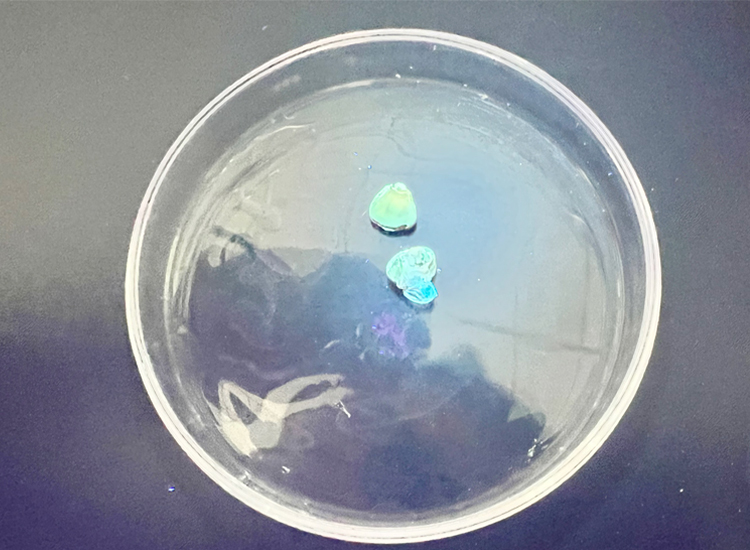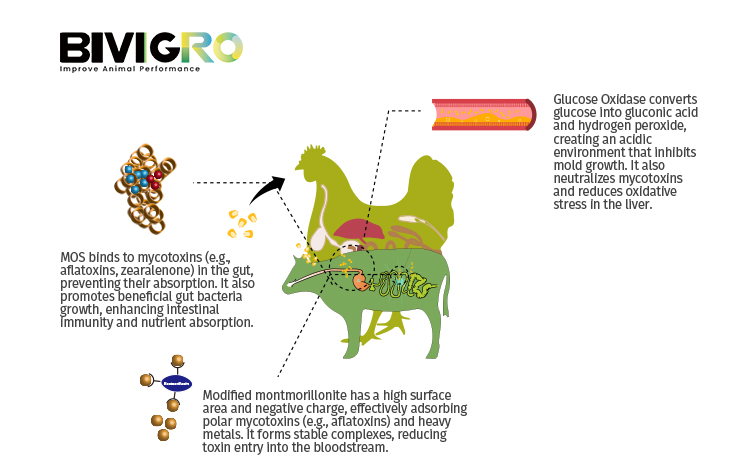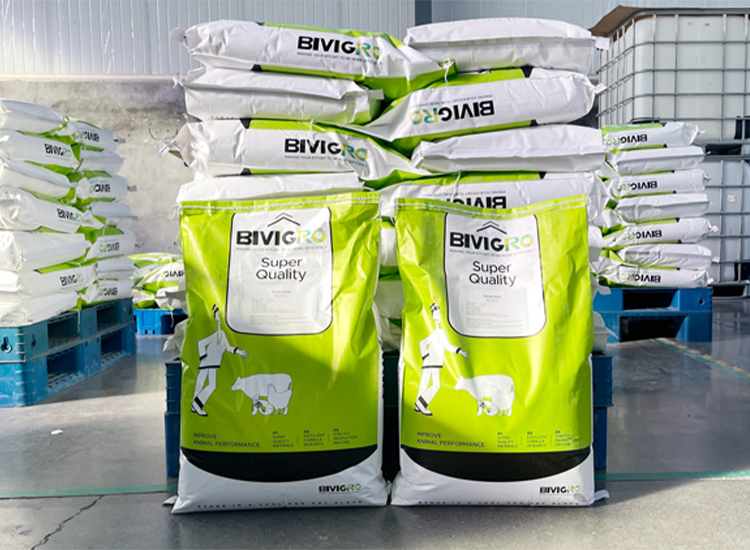-
Company
-
Products
-
Events
-
Feed Talk
-
Contact
-
Follow Us
Why We Recommend The Mold Bond To Be Effectively Toxin Binder
Mold contamination in animal feed is a threat to global animal production Toxins produced by molds—such as afla
Mold contamination in animal feed is a threat to global animal production. Toxins produced by molds—such as aflatoxins, zearalenone, and ochratoxins—compromise animal health in all many ways. These mycotoxins suppress immune function, damage liver and kidney tissues, reduce feed intake, and impair growth rates. In poultry, even low levels of aflatoxin can decrease egg production by 15–20%, while livestock exposed to zearalenone often suffer from reproductive failures, including miscarriages and infertility. For dairy cows, mold toxins disrupt rumen function, reduce milk yield. Left unaddressed, these issues affect farm profitability and food safety, as some toxins can residue in meat, milk, or eggs, posing risks to human consumers.

This is where Mol-Bond, a scientifically formulated mold detoxifier, becomes indispensable. Combining mannan oligosaccharides (MOS), glucose oxidase, and modified bentonite, Mol-Bond offers a multi-layered defense against mold toxins while promoting gut health and nutrient absorption. Unlike conventional single-action detoxifiers, Mol-Bond’s synergistic formula neutralizes toxins, inhibits mold growth, and repairs intestinal damage—ensuring comprehensive protection for livestock.

(1) Toxin Binding and Elimination: The modified bentonite in Mol-Bond acts as a highly efficient adsorbent. Its expanded layered structure provides a large surface area to bind mycotoxins through ionic and hydrogen bonding, preventing their absorption in the intestines. This is particularly effective against polar toxins like aflatoxins, with binding rates exceeding 90% in acidic gut conditions.
(2) Mold Growth Suppression: Glucose oxidase, an enzymatic component, targets the root cause of toxin production. By catalyzing the conversion of glucose into gluconic acid and hydrogen peroxide, it creates an oxygen-depleted, acidic environment in feed and the digestive tract. Molds, which thrive in oxygen-rich settings, are starved and inhibited, reducing further toxin synthesis.
(3) Gut Health Restoration: Mannan oligosaccharides (MOS) derived from yeast cell walls play a dual role. First, they selectively bind harmful bacteria (e.g., E. coli, Salmonella) carrying mannose-specific lectins, flushing them out of the gut. Second, MOS stimulates the growth of beneficial microbiota and strengthens the intestinal barrier, enhancing nutrient absorption and immune response.

Traditional mold inhibitors, such as simple clay-based adsorbents or organic acids, often address only one aspect of the problem—either toxin binding or mold inhibition. For instance, ordinary bentonite has limited capacity against non-polar toxins like zearalenone, while organic acids lose efficacy in high-pH environments like the rumen. Mol-Bond’s hybrid formula overcomes these limitations. The glucose oxidase maintains activity across pH levels, and MOS complements toxin adsorption with gut health benefits, creating a holistic solution.
Mol-Bond is not only an additive but a strategic tool for sustainable livestock management. Its ability to neutralize toxins, suppress mold, and enhance gut integrity ensures healthier animals, higher yields, and safer food—translating to long-term profitability and consumer trust.
